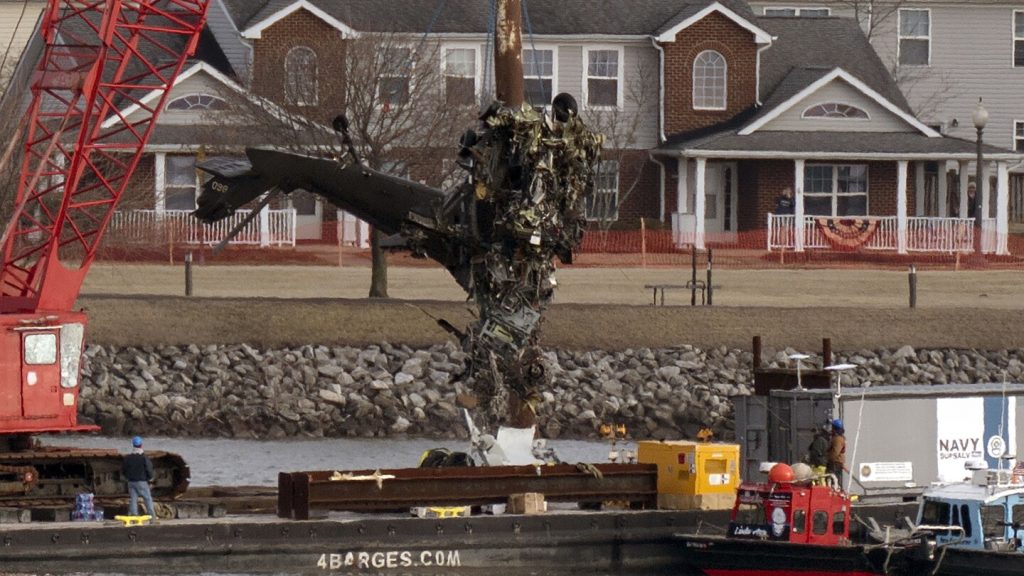Tragedy in the Skies: Unraveling the Reagan National Airport Helicopter Collision
Introduction: A Devastating Collision and Its Aftermath
On a fateful evening last week, tragedy struck when a U.S. Army Black Hawk helicopter collided with an American Airlines passenger jet near Ronald Reagan National Airport, claiming the lives of all 67 people on board. This heartbreaking incident has sent shockwaves through the nation, prompting an urgent investigation into the circumstances surrounding the crash. The Army’s Black Hawk, part of a classified mission to ensure government continuity, was one of 28 government agencies authorized to fly helicopters in the densely trafficked airspace around the airport. As investigators piece together the wreckage and review cockpit recordings, critical questions emerge: Why was the helicopter flying above the mandated 200-foot altitude restriction? Were there lapses in safety protocols, and how can such a tragedy be prevented in the future?
The crash has exposed a complex web of factors, from the strain on military aviation resources to the challenges of managing low-altitude helicopter traffic in one of the busiest airspaces in the country. With the FAA temporarily closing the airspace to military helicopters, the Army is now navigating alternative routes, while policymakers and aviation experts call for a balance between national security, pilot training, and public safety. This summary delves into the key findings of the investigation, shedding light on the human and systemic factors that contributed to this disaster.
The Army’s 12th Aviation Battalion: Stretched Thin and Flying Older Aircraft
At the heart of the tragedy is the Army’s 12th Aviation Battalion, based at Davison Army Air Field at Fort Belvoir, Virginia. This elite unit is tasked with a critical mission: ensuring the continuity of government by transporting high-ranking officials to safety in the event of an attack. Additionally, it ferries top military and government leaders to bases across the region. However, the battalion is operating under significant strain, both in terms of personnel and equipment.
The unit flies older UH-60L Black Hawk helicopters, with only eight of these legacy aircraft assigned to the battalion out of the Army’s total fleet of 2,000 Black Hawks. After the crash, only seven remain. While the battalion also operates six newer UH-60M models, known as “gold tops,” the reliance on older aircraft raises concerns about maintenance, performance, and safety. Brig. Gen. Matthew Braman, director of Army aviation, acknowledged the challenges, emphasizing that the battalion’s resources are stretched thin. This overextension may have contributed to the conditions that led to the crash, as older helicopters require more rigorous maintenance and crews must contend with outdated systems.
The battalion’s mission is undeniably vital, but the strain on its resources underscores a broader issue within the military: the need to modernize its fleet and ensure that critical units are adequately equipped to perform their duties safely and effectively.
Night Vision Goggles and the Challenges of Low-Altitude Flight
One critical piece of the puzzle is the use of night vision goggles (NVGs) by the Black Hawk crew. National Transportation Safety Board (NTSB) chairwoman Jennifer Homendy revealed that investigators believe the crew was wearing NVGs at the time of the crash, as there was no indication in the cockpit voice recorder that they were flying without them. NVGs are a standard tool for nighttime operations, but they also present unique challenges.
According to Brig. Gen. Braman, Army policy requires that all crew members either wear NVGs or remove them together, as flying with mismatched visual aids can lead to disorientation. However, NVGs can distort depth perception and make it difficult to judge distances, as ground lights appear as bright blooms that are hard to distinguish. Crews are trained to cross-check their surroundings, occasionally looking outside the goggles to gain a clearer perspective. Despite these precautions, the use of NVGs adds a layer of complexity to low-altitude flights, which are already inherently risky.
investigators are now examining whether the crew’s reliance on NVGs may have contributed to the crash. Furthermore, the older UH-60L Black Hawks lack modern safety systems like Traffic Collision Avoidance System (TCAS), which is not typically installed on military helicopters due to their low-altitude operations. This lack of advanced safety technology leaves crews more reliant on manual procedures and judgment, increasing the risk of accidents, especially in congested airspaces.
The ADS-B Conundrum: Was a Key Safety System Disabled?
Another critical question arising from the investigation is whether the Black Hawk’s ADS-B (Automatic Dependent Surveillance-Broadcast) system was turned off at the time of the crash. ADS-B provides real-time tracking of an aircraft’s location, speed, and altitude, offering far greater accuracy than traditional radar systems. During a private briefing with lawmakers, investigators hinted that the ADS-B system may have been disabled, though they did not confirm this definitively.
Sen. Ted Cruz (R-TX) pointed out that there was “no compelling national security reason” to deactivate ADS-B during a training mission, raising concerns about why this system might have been turned off. Military aircraft are permitted to disable ADS-B in certain sensitive operational contexts, but such instances are supposed to be limited. If the ADS-B system was indeed off, it could have significantly impaired air traffic controllers’ ability to track the helicopter’s movements, increasing the risk of a mid-air collision.
The investigation is now focused on determining whether the ADS-B system was operational and, if not, why it was deactivated. This detail could prove pivotal in understanding how the collision occurred and whether systemic failures in communication or protocol contributed to the tragedy.
Flying Blind: The Lax Regulations of Route 4 Airspace
The Black Hawk was flying along Route 4, a low-altitude corridor that runs parallel to the Potomac River and is used by 28 government agencies, including the Department of Defense, law enforcement, and emergency medical services. While helicopters on this route are required to maintain an altitude of no more than 200 feet, there are no clear lateral boundaries dictating how far inland or over water they can fly. This lack of guidance has left investigators wondering whether the Black Hawk strayed too far from its intended path.
Early speculation online suggested that the helicopter may have been too far inland or over the water, but the FAA has not established specific rules for lateral movement along Route 4. This oversight may have contributed to the accident, as the absence of clear boundaries leaves pilots with ambiguous guidelines to follow. In the wake of the crash, regulators are considering whether to implement stricter lateral restrictions to prevent similar incidents in the future.
The heavy use of Route 4 by multiple agencies highlights the challenges of managing airspace in a densely populated region. With so many users, the potential for conflicts is high, and the FAA’s decision to temporarily close the airspace to military helicopters underscores the urgent need for reforms. As Rep. Gabe Evans (R-CO), a former Black Hawk pilot, noted, the balance between military training needs and public safety must be carefully recalibrated to avoid such tragedies.
Looking Ahead: Lessons Learned and the Path to Safer Skies
As the investigation continues, several steps have already been taken to address the systemic issues that contributed to the crash. The FAA has closed the airspace to military helicopters, forcing the Army to reroute its flights, while policymakers are calling for stricter regulations and better oversight of low-altitude flight corridors. The crash has also reignited the debate over the modernization of military aircraft, particularly the older UH-60L Black Hawks, which lack advanced safety features like TCAS.
The NTSB’s analysis of the cockpit voice recorder and other data will be instrumental in determining whether the crew adhered to proper procedures, including the correct setting of the barometric altimeter. This device, which relies on air pressure readings to calculate altitude, is just one of the tools available to pilots. The radar altimeter, which provides real-time height data, would have offered an additional layer of safety, but even these systems are not foolproof. investigators will also examine whether the crew’s training adequately prepared them for the unique challenges of flying in such a high-pressure environment.
The tragedy serves as a stark reminder of the risks inherent in military aviation and the importance of maintaining rigorous safety standards. While the 12th Aviation Battalion plays a vital role in national security, the loss of 67 lives demands a comprehensive overhaul of the systems and protocols in place. By learning from this tragedy, policymakers, military leaders, and regulators can work together to create safer skies for everyone.
As the nation mourns the lives lost, the focus must now shift to ensuring that such a disaster never occurs again. The balance between security, training, and safety is delicate, but it is one that must be struck to honor the memory of those who perished and to protect the lives of those who take to the skies every day.












